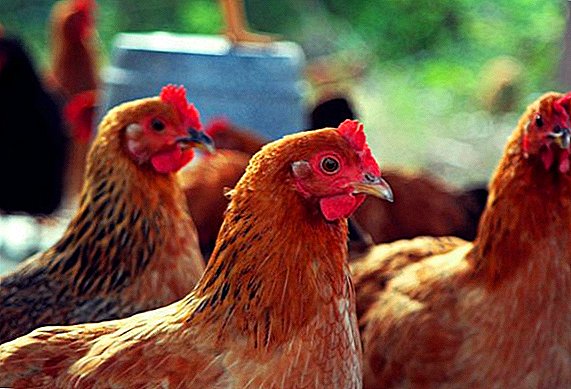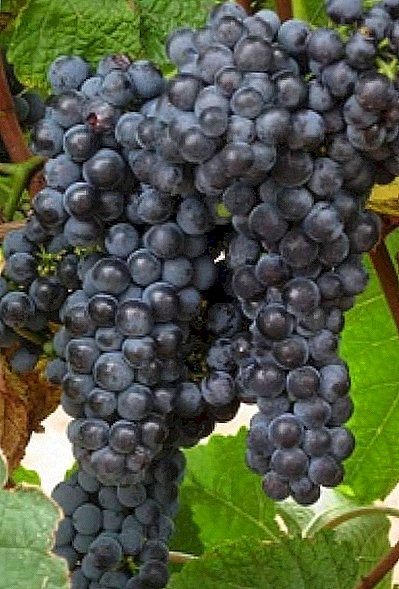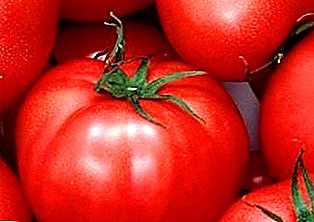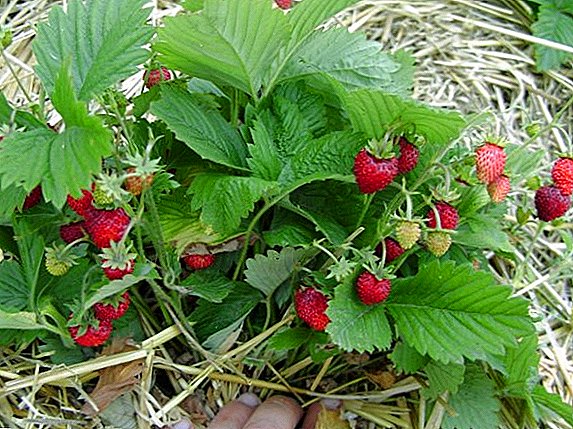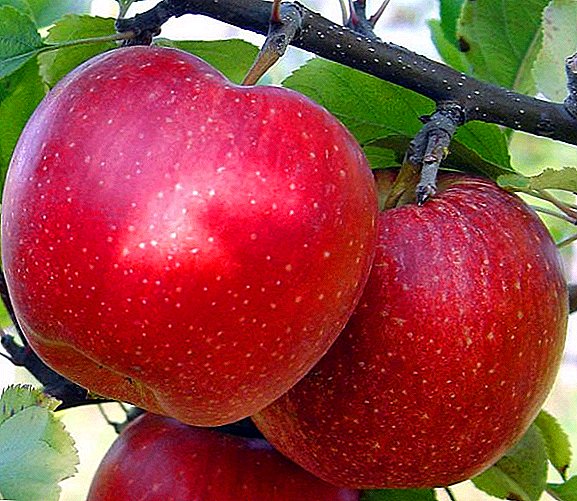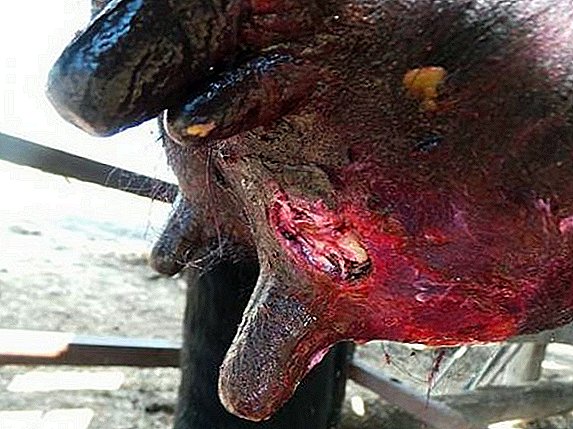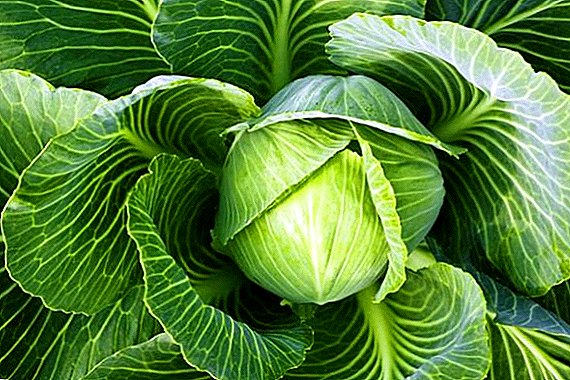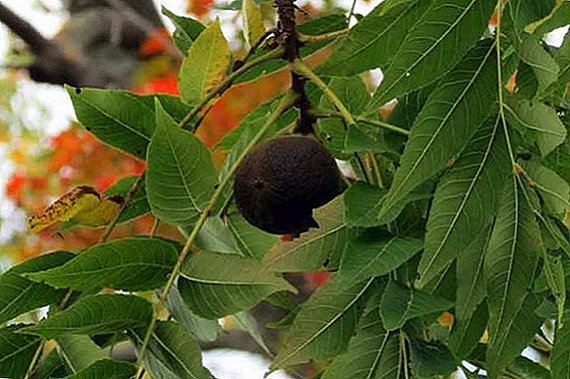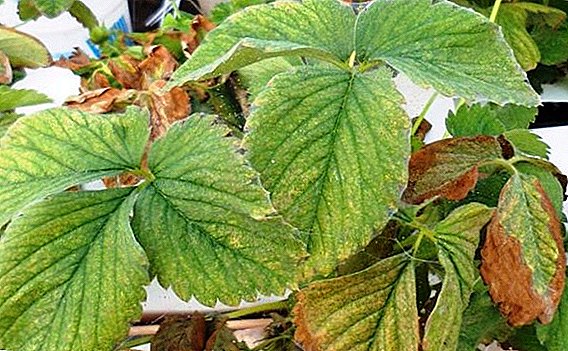 With the onset of summer, everyone eagerly awaits the harvest of strawberries. However, strawberries are prone to a large number of diseases, and treatment measures need to be taken on time. Otherwise, there is a threat to remain without delicacy. This article describes the most common plant diseases, their signs, treatment and prevention methods that will help you save strawberries and enjoy the divine taste of its fruits.
With the onset of summer, everyone eagerly awaits the harvest of strawberries. However, strawberries are prone to a large number of diseases, and treatment measures need to be taken on time. Otherwise, there is a threat to remain without delicacy. This article describes the most common plant diseases, their signs, treatment and prevention methods that will help you save strawberries and enjoy the divine taste of its fruits.
Spotting
Spotting is the most common disease of strawberries. It affects not only the leaf part, but also leads to a loss of the crop. With extensive disease can disappear all the fruits, as well as the seedlings themselves. The threat of damage to the plant by this disease persists throughout the growing season. Spotting does not go away by itself, to get rid of it, you must immediately take appropriate measures. Strawberry leaf spot is caused by a fungus, Depending on its type, these types of diseases are distinguished:
- white spot;
- brown
- brown.
Important! If strawberries and the soil under it are not cultivated, you can lose the harvest not only this year, but also next year: the fungus will begin to actively develop next year, inhibiting the growth and flowering of new seedlings.
White spot
 This type of disease is caused by fungi of the genus Mycosferellum and Ramularia. Begins to develop in early spring. It affects the leaves, peduncles, petioles, berries. Signs of white spot can be found as early as May. These include:
This type of disease is caused by fungi of the genus Mycosferellum and Ramularia. Begins to develop in early spring. It affects the leaves, peduncles, petioles, berries. Signs of white spot can be found as early as May. These include:
- the formation on the surface of sheets of white spots with a dark edging;
- the shape of the spots is round or oval, they are located along the central veinlets of the leaves;
- over time, the spots fall out, and holes are formed in their place, under the conditions of the development of the ailment, their size becomes larger, forming large holes;
- leaves and petioles die off;
- the berries are stained and rot or dry.
- before planting seedlings, onions, garlic, greens, carrots, potatoes, eggplants, cucumbers, tomatoes, corn, celery, beans, rape, clover, and grains grew on the site;
- thick landing;
- soil damage by rot or pests;
- no timely cleaning of dry leaves;
- uncultivated or late cultivated soil in spring;
- long-term use of the site.
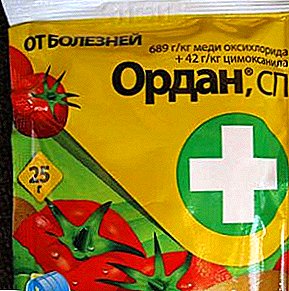 In winter, spores remain in the remains of the plant. The fungus tolerates heat and low temperatures, wet weather and drought. In open places where there is a lot of light, spores develop faster. The disease is transferred to healthy growths with the help of wind, rain, insects, through the soil.
In winter, spores remain in the remains of the plant. The fungus tolerates heat and low temperatures, wet weather and drought. In open places where there is a lot of light, spores develop faster. The disease is transferred to healthy growths with the help of wind, rain, insects, through the soil.Control and prevention measures:
- clean the area from last year’s leaves in early spring and burn them;
- in the spring to process the seedlings with Falcon, and in the fall with Ordan;
- in the case of planting new shoots, after the fight against white spot, only healthy, undamaged seedlings are used;
- thin out mustache and seedlings to ensure normal thickness;
- timely remove the missing, affected leaves and seedlings;
- remove missing berries;
- do not overflow;
- fertilize with potash fertilizer;
- Do not fertilize with organic matter (manure, droppings).
Did you know? By folk remedies to combat diseases of the strawberry in the form of white spot refers to spraying the leaves of the plant iodine solution (50 ml iodine per 10 liters of water).
Brown spot
 The causative agent of brown spot is a mushroom of the genus Mersoninn. Develops in the middle of July. Brown spot affects the leaves of strawberries, sometimes mustaches and petioles. The leaves at the beginning of the disease are covered with large reddish angular, irregular-shaped patches. Later spots turn brown. On the surface of the specks scattered black dots that emit mucus. As the disease progresses, the spots lose their pronounced color, and the leaves simply dry out. On the petioles and whiskers, the brown spot shows itself as small, slightly indented black dots. Carriers are insects, wind, raindrops.
The causative agent of brown spot is a mushroom of the genus Mersoninn. Develops in the middle of July. Brown spot affects the leaves of strawberries, sometimes mustaches and petioles. The leaves at the beginning of the disease are covered with large reddish angular, irregular-shaped patches. Later spots turn brown. On the surface of the specks scattered black dots that emit mucus. As the disease progresses, the spots lose their pronounced color, and the leaves simply dry out. On the petioles and whiskers, the brown spot shows itself as small, slightly indented black dots. Carriers are insects, wind, raindrops.
Important! Lthe sources of strawberries disappear in a short period of time. At a late stage, the disease is difficult to notice. It seems that the plant is simply preparing for a period of rest: the spots disappear, and the leaves just dry out. However, when young foliage grows, spots of micelles form on it that hour.
Factors creating favorable conditions for the development of the disease:
- thick landing;
- excessive watering;
- untimely cleaning of the site from weeds.
- in the fall, spray the plot with "Ordan";
- spring with Falcon or Ridomil for prophylaxis;
- for planting use only healthy seedlings;
- grow a plant in high beds;
- timely cut and clean the area from dry foliage and mustache;
- use potash fertilizers;
- treatment with a solution of manganese (5 g per 10 l of water).
Angle or brown spot
 It affects the plant in the month of July. Damages leaves, mustaches, petioles, berries. It leads to the death of the leaves, after which the plants do not tolerate the winter, many of them freeze, and the yield is also deteriorating next year.
It affects the plant in the month of July. Damages leaves, mustaches, petioles, berries. It leads to the death of the leaves, after which the plants do not tolerate the winter, many of them freeze, and the yield is also deteriorating next year.
At the onset of the disease, yellowish spots are formed on the leaves, which eventually turn brown. However, a yellowish rim remains. With the development of the disease, the spots increase and become angular. After the rains, light mucous spores of the fungus form on the surface of the spots. On the petioles and whiskers, the disease manifests itself as brown dots, which eventually turn into necrosis.
Methods of struggle and prevention:
- in the fall clean up all dry and infected foliage;
- process in the autumn period of the plant "Ordan";
- in the spring for prevention can be sprayed with "Ridomil", "Kvadrisom" "or" Falcon ".
Mealy dew
 The disease appears on the leaves and fruits with a white patina, which smells like mold. The causative agent is fungi, which are carried by air or together with infected seedlings.
The disease appears on the leaves and fruits with a white patina, which smells like mold. The causative agent is fungi, which are carried by air or together with infected seedlings.
Methods of struggle and prevention:
- planting strawberries in well-ventilated and well-lit areas;
- grow a plant in high beds;
- spring spraying with Quadris (for prophylaxis);
- when identifying signs of disease after picking the berries, the plants are sprayed with Fundazole.
Did you know? Powdery mildew gives unpleasant taste of mold and ugly forms to strawberry fruits.
Rot
Rot refers to the dangerous and common diseases of strawberries. It is difficult to withdraw. At the same time, it leads to the death of a large number of crops. Disease can destroy up to 85% of fruits.
Anthracnose rot
It affects the entire elevated part of strawberries. The signs of the disease include:
- appearance of gray spots on foliage with a purple border;
- defeat the stems gray dots and sores;
- wilting unripe fruit;
- black rotting berries on the berries;
- fruit drying.

Important! The most favorable condition for the development of rot is a wet soil. Drying excessively moist soil with heavy rainfall will help save the plant from the disease.
Methods of struggle and prevention:
- planting healthy seedlings;
- growing strawberries in the high beds;
- in case of detection of the disease, spraying with "Antracol" or "Quadris".
Rhizoctoniosis (black root rot)
 Strawberries are subject to this ailment throughout the growing season. With this disease, round spots are formed on the roots of the plant. Over time, the root system becomes flabby and dry. With this disease, yield is significantly reduced, seedlings do not grow well and practically do not form a mustache, the stalks take on a brown color. After some time, in the absence of appropriate measures, the plant dies.
Strawberries are subject to this ailment throughout the growing season. With this disease, round spots are formed on the roots of the plant. Over time, the root system becomes flabby and dry. With this disease, yield is significantly reduced, seedlings do not grow well and practically do not form a mustache, the stalks take on a brown color. After some time, in the absence of appropriate measures, the plant dies.
The most susceptible to rhizoctoniosis are plants that grow:
- on exhausted soil;
- in areas where before it grew potatoes, tomatoes, corn;
- in conditions when strawberries were grown for a long time without changing places.
- changing the place of growing the plant (plant in the same place no earlier than after 4 years);
- it is not advisable to fertilize with organic matter;
- for prevention in the fall sprayed seedlings "Ordan".
White rot
 A sign of white rot disease is lightening of the foliage with its further drying or rotting. A white bloom forms on the leaves and berries. Over time, the berries begin to rot. The development of the disease contribute to cool wet weather and dense plant planting.
A sign of white rot disease is lightening of the foliage with its further drying or rotting. A white bloom forms on the leaves and berries. Over time, the berries begin to rot. The development of the disease contribute to cool wet weather and dense plant planting.
Methods of prevention and control:
- thinning of densely planted seedlings;
- growing in high beds;
- when identifying signs of illness produce strawberry processing "Dezoralom".
Gray rot
It affects the entire aboveground part of the plant. Gray spots appear on the leaves, they do not have a clear outline of the boundaries. Fruits are covered with brown spots, become watery, flabby and tasteless. With the development of the disease berries are completely covered with gray bloom.
 The factors accompanying the appearance of gray rot are increased humidity and lower temperatures, touching the ground berries, and untimely harvesting of infected berries. The most favorable conditions are wet cold weather and temperature changes. The fungus that provokes the appearance of rot spends the winter in the ground and on the remains of strawberries.
The factors accompanying the appearance of gray rot are increased humidity and lower temperatures, touching the ground berries, and untimely harvesting of infected berries. The most favorable conditions are wet cold weather and temperature changes. The fungus that provokes the appearance of rot spends the winter in the ground and on the remains of strawberries.
Methods of prevention and control:
- autumn cleaning of the site from infected leaves and fruits;
- straw mulching;
- thinning;
- spraying at the beginning and in the middle of flowering "Teldorom";
- periodic cleaning of infected fruits, leaves, whiskers, weeds.
Did you know? The most prone to defeat gray rot are such varieties: Zengana, Beauty, Cinderella, Hope.
Black rot
This disease affects berries. They turn brown, lose their smell and taste, become watery. In the process of development of the disease are covered with dark bloom.
Control and prevention measures:
- growing strawberries in the high beds;
- autumn processing "Ordan";
- for prophylaxis in the spring period they are sprayed with boric acid (10 g per 10 l of water).
Important! Prophylactic protection of strawberries from diseases chemical spraying should be done before flowering and after harvesting. If it is necessary to make urgent measures - the crop after spraying is collected and discarded. Be sure to familiarize yourself with the dangerous period of exposure to poisons, which is listed on the package.
Withering
This disease occurs quite often. Caused by the disease of mushrooms. At the same time, strawberry bushes disappear very quickly. For the withering is also characterized by the mass destruction of plants.
Ventilatory wilting
 It leads to a significant decrease in yield and interferes with the full reproduction of the plant. Called the activity of the parasite - nematode. With abundant damage on sandy soil, strawberries disappear in a week. If you do not take action, the entire plantation has been dying already for 2 years.
It leads to a significant decrease in yield and interferes with the full reproduction of the plant. Called the activity of the parasite - nematode. With abundant damage on sandy soil, strawberries disappear in a week. If you do not take action, the entire plantation has been dying already for 2 years.
The signs of the disease include:
- slow growth of bushes;
- foliage reduction;
- redness of the petioles.
- exclude planting in areas where potatoes used to grow;
- periodically change the place of planting strawberries;
- fight against nematodes.
Phytophthora wilt
It affects all terrestrial parts of the plant, leads to a decrease in yield. Brown spots appear on the berries, they become bitter to the taste. After a while the berries dry. Buds and flowers during flowering are covered with dark irregular-shaped spots. Stems and petioles become brown. After the rain, all parts of the plant are covered with white bloom.
Methods of treatment and prevention:
- avoid excessive watering;
- periodically change the location of strawberries;
- before flowering spray "Ridomil".
Fusarium wilt
 The earliest sign of the disease is blackening of the edges of the foliage. Petioles become brown and rot over time. Affected bushes descend to the soil. Berries turn brown and shrink over time. The diseased plant disappears completely after a month and a half.
The earliest sign of the disease is blackening of the edges of the foliage. Petioles become brown and rot over time. Affected bushes descend to the soil. Berries turn brown and shrink over time. The diseased plant disappears completely after a month and a half.
Methods of treatment and prevention:
- timely removal of diseased plants;
- autumn processing "Ordan";
- periodic change of cultivation;
- exclude the planting of strawberries in the areas where potatoes, corn, and onions grew before.
Important! When planting, use only completely healthy material. All types of diseases are carried along with infected seedlings.
Thus, the most important methods of controlling strawberry diseases are timely clearing of weeds, infected parts of plants, fruits, as well as growing in high beds, preventive spraying.


